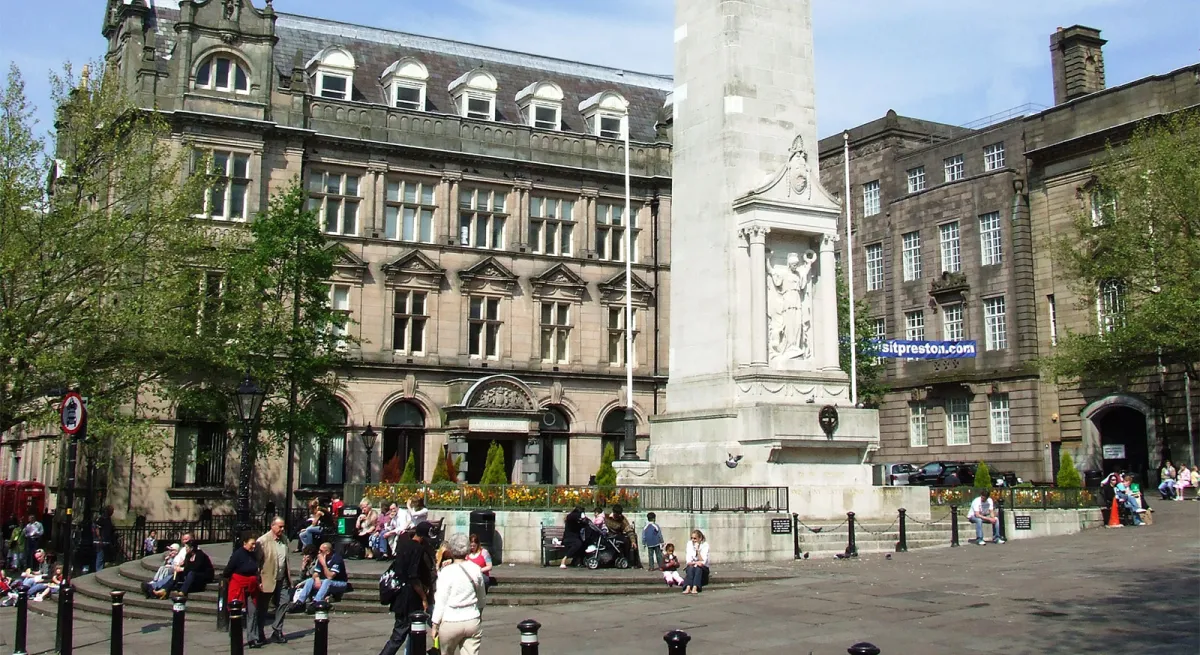The exciting collaboration between Julius Baer Foundation (JBF) and London School of Economics (LSE) sets out to find successful ways to fight economic inequality at the local level, from real, concrete examples around the world. We look for communities that have managed to decrease inequality in their local context, and try to find out how they did it, what can be learned from their experiences, and whether they can be replicated or adapted in other contexts. The first example we look at is the ‘Preston Model’ of Community Wealth Building (CWB).
Preston is a city in the north west of England, in the county of Lancashire, one hour away from Manchester; it has a population of just over 140K. At the beginning of 2018, a journalist coined the term ‘Preston Model’ to describe what he found when he visited the town. He described it as an example of what could be achieved if only local politicians were brave and imaginative enough: an antidote to the neo-liberal model of urban development predicated upon privatization and high inequality.
The ‘Preston model’ is relatively young; it originates from the ‘Cleveland model’, developed by Ted Howard and the Democracy Collaborative in the US, and also in work that had been carried out in Manchester in the early 2000s. It is loosely based on three principles, adopted by local government and think tanks as follows.
First, they wanted to understand where the local procurement spending was going, in a geographical sense. This means understanding where key local institutions hospitals, schools, police, university, council offices and so on were spending their money to source food and services. These institutions were called ‘anchors’, both because they were key to the local economy but also because, by their very nature, they were anchored in place, and could not relocate to somewhere else, where the cost of labour was cheaper, for example. It was deemed important from a strategic point of view to work with these public service anchors first and foremost. This was a mapping exercise but is also divided the spending by sector and type of supplier involved.
Secondly, they started to think about how that spending could be addressed and directed differently, kept local, employing local firms, to help support the local economy. Thirdly they tried to develop strategies to engage with and change the behaviours of the suppliers who were the recipients of these local budgets, through procurement spending, to convince them to focus on adding ‘social value’, meaning that they should deliver benefits to the local communities as well as the service they were commissioned to provide.

Following the global economic crisis of 2008, local government in Preston (the Council) also started acquiring and retaining assets, such as land and buildings, as opposed to selling them to developers, and began developing them instead. For example, the Council have successfully renovated the old market, which is now a beautiful glass and wrought iron structure, stunning and clearly successful with shoppers and visitors alike. One of the main points of the model was to keep local traders selling local food, at reasonable cost, and having a food market in the middle of the town fulfils that aim. More than that, many of the most deprived communities in Preston are largely within walking distance of the city centre, so having a source of affordable fresh food without needing a car is a huge benefit to them.
One of the main points of the model was to keep local traders selling local food, at reasonable cost, and having a food market in the middle of the town fulfils that aim.
Another example of what the Preston model is truly about is what happened when a local police station needed to be refurbished: according to the local staff member in charge of this, a lot of the work they were commissioning was going out to large contractors and big firms who were geared up to deal with big commissions. At the same time, Preston had a Chamber of Commerce covering lots of small businesses, family firms, even ‘one man bands’. So once they had a big development in hand, in this case the redevelopment of a police station, the staff member decided to start running supplier engagement days at a college nearby. It was a great success. He attended, together with the head of procurement for the force and, in his own words:
There were loads of small businesses like little one-man-bands, curtain shops, blinds, carpet shops, all interested to know what was going on. And we said, “Look, you know, this is a fantastic opportunity for all of you, we’ll be advertising everything, every single thing you can think of from waste bins to curtains to blinds to light fittings, we want it all to come locally, you know.” And bless them, nearly all of them put bids in and a lot of them were successful. So, your little curtain shop, you know, your lighting shop, they got a lot of big business from that build.
So, does the model work? Does it reduce wealth inequality? We are still collecting more data at the moment, but so far we can say that it probably is. Anchor spend analysis have been conducted by the Centre for Local Economic Strategies (CLES) in 2013 and 2017. These show that the amount of money spent in the local area, in Preston and in Lancashire as a whole, has undoubtedly increased over time: specifically by 74m in Preston and 200m in Lancashire. This is a significant and positive development. The fact that many residents have benefited from wage increases up to Real Living Wage standard is also positive and has probably decreased inequality. The fact that many of the ‘anchor’ institutions have committed to ‘in-sourcing’ professional roles that have in the last couple of decades traditionally been contracted out, resulting in inferior working conditions, is also to be commented and has probably had an effect. CLES claims that 4000 extra employees were receiving the Living Wage by 2018 (CLES & Preston City Council, 2019) tackling the income inequality issue. Furthermore, "According to the Office for National Statistics Indices of Multiple Deprivation, between 2007 and 2015 Preston moved from being the 20th most deprived local authority area in the country to the 60th” (CLES & Preston City Council, 2019: 32) which seems a remarkable achievement.
The Preston model is clearly an interesting and promising reality. It has certainly contributed to a shift in the thinking behind urban regeneration paradigms, the role of local authorities to address wealth distribution imbalances, and shown the possibilities that open up when new ideas and new hopes are allowed space to flourish. Moving on, JBF and LSE will look further afield for other examples, cities and towns that have successfully tackled income and wealth inequality.

Research Fellow at the International Inequalities Institute (III) of the London School of Economics.

